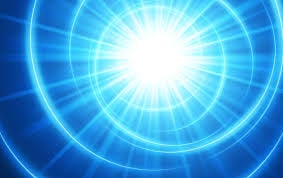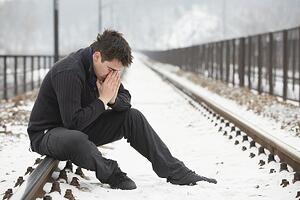Every day, we are bombarded by different things that are affecting our health. Vaping is the new health scare of today and CBD is the new health craze; but there is something that all of us are surrounded by for several hours every day that can have a big impact on our health and well-being: light.

Our exposure to light has steadily increased since the creation of artificial light, and it has slowly been having an effect on us over the decades.
The addition of computers, smartphones, television, and tablet screens has given us even more exposure to light that humanity has not had for most of its existence.
Here are a few of the ways light is affecting us that are both good and bad.
5 Ways Light Affects Our Everyday Lives
1. Mood
The most common way that light affects mood is seasonal affective disorder (SAD). Some people are affected more than others when winter comes and the days become shorter. This change in circadian rhythm can cause symptoms of depression in those who get a boost in mood from the sun.
Most people also spend less time outside during winter. The short days mixed with spending more time indoors lead to much less exposure to the sun. It’s uncertain whether vitamin D has anything to do with SAD or if it’s entirely due to light exposure.
If you believe you have the seasonal affective disorder, you should talk to a therapist. They will decide if you need medication. They might also recommend getting more bright light in the morning as well.
Blue light specifically is believed to increase alertness and improve performance on psychomotor vigilance tasks. One study even showed that blue light activates executive functions in the brain.
However, there is a dark side to blue light.
2. Sleep & Mental Health
The blue light will keep you awake. This is becoming more of an issue because of smartphones and other mobile devices. It’s even believed to be causing more cases of insomnia because it suppresses melatonin, which helps you fall asleep.
The extra blue light that we’re getting throws off our circadian rhythm, making it harder to fall asleep. A circadian rhythm is a “roughly 24-hour cycle in the physiological processes of living beings, including plants, animals, fungi, and cyanobacteria.”
Before artificial light was invented, our bodies had natural circadian rhythms. We slept when it was dark and woke up when the sun came up. Our bodies have not yet fully adapted to artificial light and the modern work schedule and likely won’t for a long time.
Because of this, it’s best to spend the last hour or so of your day in dim light so that you can fall asleep quicker. This means dimming the lights in your home and staying away from your smartphone, tablet, and computer.
Your alarm clock can even keep you awake. Turn it away from you so that it doesn’t shine in your eyes. It will also keep you from looking at the clock if you’re having trouble falling asleep.
If you still have trouble falling asleep, try reading or meditating before bed, and if lack of sleep if affecting your everyday life, seek out treatment. Treatment usually involves therapy and medication.
3. Productivity
When you are awake, blue light is fantastic for productivity. That’s why LEDs are great options for places of business. Fluorescent lights tend to make people sleepy and even depressed, but LEDs can have the opposite effect.
Switching to LEDs can improve morale and productivity by waking everyone up and literally brightening their day. It helps to have as much natural light as possible in the room as well.
Natural light should be your number one priority in the workplace. It can reduce headaches, stress, and drowsiness as well as anxiety. Make sure you don’t have any furniture blocking windows.
When deciding between cold and warm light, you’ll need to factor in what the room is used for. Break rooms and relaxing rooms should have warmer light, and brainstorming rooms and conference rooms should have colder light.
4. Appetite
Speaking of break rooms, light can even affect how hungry you are. A recent study found that “blue-enriched light exposure, compared with dim light exposure, was associated with an increase in hunger that began 15 minutes after light onset and was still present almost two hours after the meal.”
This could explain why you’re getting the late-night munchies. If light really does affect hunger, then being exposed to artificial light could be telling your brain that it’s time to have a midnight snack.
This is yet another reason to dim the lights if you like to stay up late. It won’t just make you hungry. You can also throw off your metabolism. Light exposure (or lack thereof) could end up being the next fad diet.

As a society, some of us have purposely decided to throw off our circadian rhythms twice a year. Europe and North America are two of several places in the world that recognize daylight savings time. It was started to make better use of daylight in the summer and (likely) to increase productivity.
Some people think it was done so that farmers had more daylight. Others think we have it so we can play baseball longer. Whatever the reason, it messes with our heads every time we move forward or back an hour.
That one-hour disruption reduces morale and productivity, causes additional workplace injuries, causes increased car accidents, is related to heart problems, and can affect your diet and appetite. See anything familiar? All of those topics were already covered in this article!
We all have trouble adjusting, and there are many people who are beginning to question whether we should continue with daylight savings time. Until we finally abandon it, you can take a few steps to help you adjust.
The first thing you should do is change your sleep schedule a few days before the actual switch. This will give your body more time to adjust to the change when the day finally comes.
Try to wake up to the light. Seeing light as soon as you get out of bed will help to regulate your circadian rhythm. And avoid caffeine and napping during the day. A cup of coffee and a nap can both mess up your circadian rhythm.
As you can see, the type and amount of light you get in a day can have a major impact on your well-being.
At The Alaska Sleep Clinic, we understand that the dark, winter nights can be difficult for many, and even cause severe symptoms of depression in others. Because depression is often linked to sleep disorders, we want to help you get the best treatment for your disorders possible.
If you think you, or a loved one, may have the seasonal affective disorder, feel free to contact us for any of your sleep-related needs, and get started on your way to a happier, healthier life.












